The supplement industry is interesting because some of the most effective ingredients aren't necessarily new, but are instead substances that have been around for centuries. Natural herbs and roots are central in the practices of Ayurvedic and Traditional Chinese Medicine, and many of them have found their way into the world of western supplementation.
One such ingredient is curcumin, the revered active ingredient in turmeric root. It boasts wide-ranging abilities, such as inflammation reduction and improved metabolic functioning, which stem from its strong antioxidant profile. Despite some capabilities in its base form, what happens when modern science meets this supplemental stalwart? When these two worlds collide, one elevates the potential of the other!
Tertrahydrocurcumin - Curcumin's Major Bioactive Metabolite
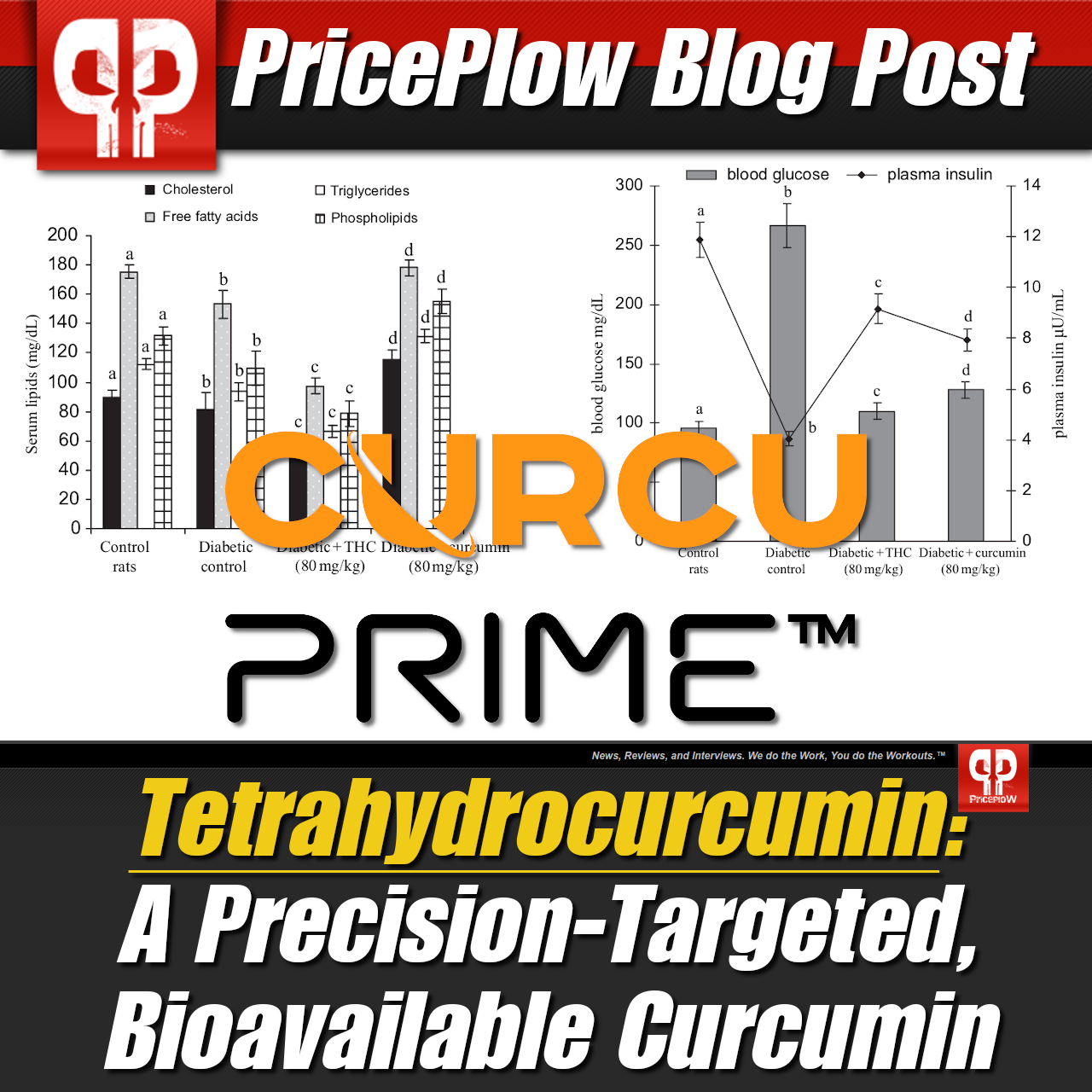
Meet Tetrahydrocurcumin: A precision-targeted, more bioavailable curcumin metabolite that is more white than yellow!
Tetrahydrocurcumin (4-HC) is a major bioactive derivative of curcumin, and thanks to advances in science, it's also given credibility as the engine behind all that curcumin brings to the table.
With a newfound ability to extract and isolate the compound, research has even seen tetrahydrocurcumin outperform its parent compound in several tests of its capabilities. Not only can 4-HC expand upon curcumin's capabilities, it also seems to diminish the limitations of the long-used herb. This translates to superior effects in the areas of blood sugar regulation, antioxidation, and inflammation - all things that many of us could certainly benefit from!
In addition, 4-HC has the interesting effect discussed below that it is colorless -- and doesn't stain everything it touches!
In this article, we analyze the research available on tetrahydrocurcumin and everything there is to know about it, and take a look at NNB Nutrition's CurcuPrime, the premier form of 4-HC on the market.
Before we get to all of that, make sure you're caught up with us here at PricePlow. We create informative content on a daily basis to provide you more information on everything that's going on within the industry.
Subscribe to PricePlow's Newsletter and Alerts on These Topics
From the Zingiberaceae family to supplements - where does Tetrahydrocurcumin come from?
Before we can talk about tetrahydrocurcumin, we need to first discuss the root in which it comes from - turmeric!
(If you're already well-versed in turmeric and curcumin, you can skip down to the tetrahydrocurcumin specific section below.)
Talking turmeric: some background
Long understood as one of the most potent natural medicinal plants on the planet, turmeric has been around for ages. In various parts of the world, turmeric is also known as Curcuma longa, a plant that hails from the Zingiberaceae family. The turmeric that makes its way into medicinal and health-promoting uses comes from the rhizome of the plant, which is a horizontal underground stem that puts out lateral shoots.
History and use of turmeric
Turmeric is one of the many natural herbs and spices native to the ginger family of plants that grow throughout much of Asia and Africa. In fact, its relative abundance in these regions is what ultimately led to its adoption within some of the oldest natural systems in medicine, specifically Ayurvedic and Traditional Chinese Medicine (TCM).

Also known as curcuma longa, turmeric is the root where we get curcumin - and ultimately tetrahydrocurcumin - from.
The earliest appearance of turmeric in civilization seems to be over 4000 years ago, as the Vedic culture in India used the compound as a culinary spice and a religious object.[1] It found its way into Ayurvedic literature around 250 BC, where it was suggested as an antidote for consuming poisoned food.[1] Its applications in folk medicine have only grown from there, as Ayurvedic practices began to use the spice for virtually everything -- energy, digestion, respiratory health, and inflammation are just a few of these wide-ranging uses.[1] Both its culinary and medicinal uses have continued to this day, as people continue to find the spice flavorful and effective in certain health-focused applications.
Much of this can also be said for other herbs with roots in the Zingiberaceae family, with Zingiber officinale (ginger) and Aframomum (grains of paradise) among those compounds that share both histories and capabilities with turmeric. They share something else in common, too - just as both of those spices have specific bioactive compounds that drive their valued abilities, so does turmeric!
Curcumin - turmeric's key contributor
Though there are hundreds of individual constituents that reside in turmeric, there are a few particular components that are responsible for much of what turmeric does. There are four of these compounds, collectively called curcumoinoids, that carry most of the reported health benefits of turmeric.
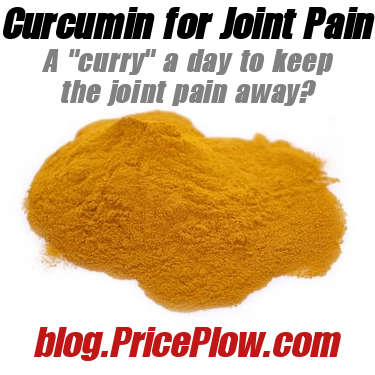
"A curry a day keeps the joint pain away!" A while back, we wrote about curcumin for joint pain, but there's so much more this compound can do!
The main compound within the cuurcumoinoid class of molecules is known as curcumin, which makes up the vast majority of the total curcumoinoid content in turmeric. The other three - demethoxycurcumin, bisdemethoxycurcumin, and cyclocurcumin - contribute somewhat,[2,3] but not nearly to the same degree as curcumin. These ancillary curcuminoids are simply role players in the overall game, as curcumin dominates the action!
Curcumin's mechanisms of action
The manner in which curcumin goes to work within the body is quite interesting. Not only is this yellow-colored compound capable of intervening directly with bodily mechanisms, but it also acts as a "kickstarter" of sorts, triggering other biological interactions after its initial interaction. As far as its direct molecular effects, curcumin has quite a few:
- AP-1 transcription factors are integral in cell proliferation, and the nature of their impact depends on where they're expressed. Curcumin inhibits the effects of AP-1 released by tumor promoters, while also up-regulating antioxidant enzyme activity in more positive AP-1 expression.[4,5]
- Suppression of mammalian target of rapamycin (mTOR) expression. Although mTOR activity plays a central role in building muscle mass and strength, it also has a relationship with inflammation - like AP-1 expression, mTOR activity stemming from tumor cells can be damaging.[6] Acting as anti-inflammatory, curcumin helps relieve some of these dangers
- Inhibition of Src and focal adhesion kinase (FAK),[7] two protein kinases whose respective pathways have been linked to the development of various diseases and cancers.[7,8]
Targeting nuclear factor kB
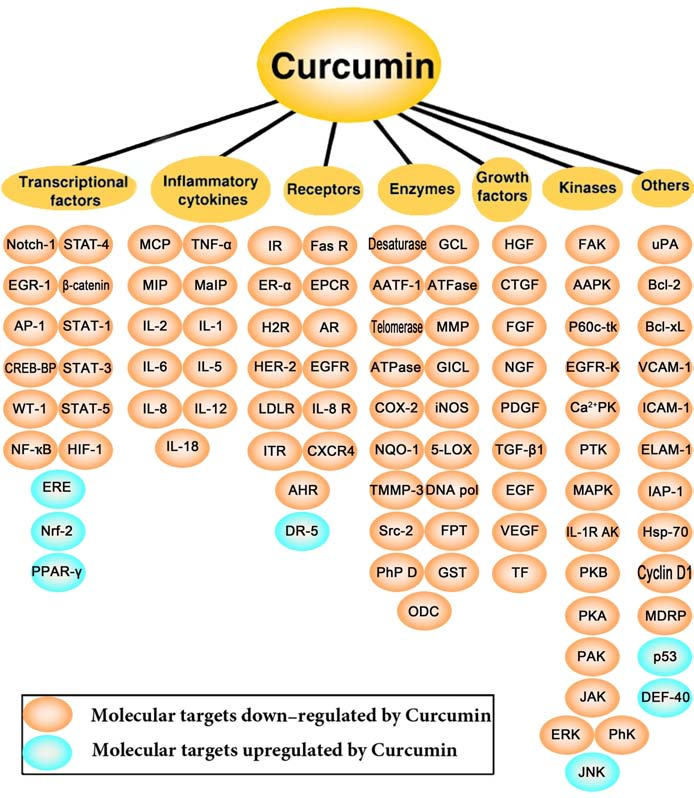
While the NF-κB pathway is one of the main targets of curcumin, it's definitely not the only one![9]
Many of the downstream effects triggered by curcumin have to do with nuclear factor κB (NF-κB), a major proinflammatory within the body.[10] The NF-κB pathway is one of the key targets of curcumin,[11] and its inhibition is a main reason why curcumin has such a pronounced anti-inflammatory effect.
These biological interactions are what allow curcumin to do much of its work. Research has seen this curcumoinoid act as a potent anti-inflammatory,[12] a anxiety-relieving agent,[13] nitric oxide booster,[14] and metabolic regulator,[15] among other things. Clearly, curcumin brings a plethora of possible benefits to the table, but you may find yourself asking, what's the catch?
The issue with curcumin - poor bioavailability!
Even though the aforementioned interactions and benefits are surely positive in most cases, as with most things, curcumin does have its deficiencies...
Unfortunately, curcumin has extremely poor bioavailability. Science has identified a few reasons as to why this is the case, citing low intestinal absorption rate and rapid metabolism (also known as glucuronidation) as the main culprits.[16] This means that, without outside intervention, rather large amounts of curcumin need to be involved in order to yield significant effects, which isn't a high-yield investment. Just as science identified this major fault, however, it also discovered ways to circumvent it.
There are ways to improve it, but can we do better?
Various methods of improving curcumin's bioavailability exist, many of which involve an attachment with other substances. Because its inherently a fat-soluble compound, pairing it with other fat-soluble compounds such as phytosomes and oils has been shown to increase absorption.[17] Ingesting piperine, the major bioactive component in black pepper, has also vastly improved bioavailability.[18]
Effective in their own right, science has continued to search for additional ways to improve curcumin's bioactivity. As it turns out, a superior option may not lie in some partnership of curcumin with another ingredient, but rather in a closer look into the digestion of the curcuminoid itself!
Looking deeper into curcumin...
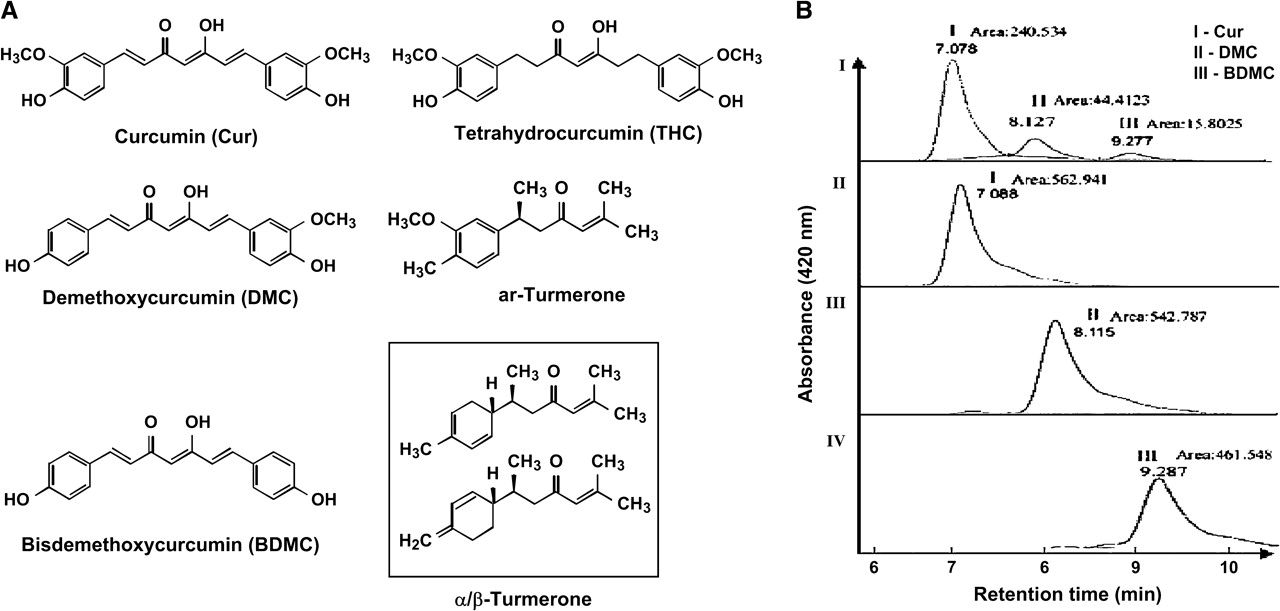
Curcumin is great, but what about the other "curcuminoids" and metabolites? Researchers wondered if perhaps one or more of them have more bioavailability... and that turned out to be the case![19]
With curcumin's well-documented poor yield of absorption, it's arguable that the scientific community has somewhat neglected the actual metabolization of the compound. As it turns out, that was a grave mistake -- better understanding its metabolism and breakdown has unveiled a way to enhance curcumin supplementation, and it was right before our eyes this entire time!
When the body begins to metabolize curcumin, it creates multiple metabolites at a rapid pace. The main byproducts of curcumin metabolism in humans are curcumin sulfate and curcumin glucuronide,[20] with research also confirming a large presence of the metabolites dihydrocurcumin and tetrahydrocurcumin during this process.[21,22] Upon taking a closer look at these byproducts, scientists have discovered that one of them not only seems to bring about the same effects that curcumin has, but that it can be isolated to create a superior, more potent ingredient!
Tetrahydrocurcumin - suped-up curcumin!
Tetrahydrocurcumin (4-HC) is not only a major metabolite produced during the reduction of curcumin, it may be the primary byproduct responsible for much of its parent compound's capabilities. Structurally, it's very similar to curcumin, with the key differentiator being four additional hydrogen atoms. Visually, the two are different as well: while curcumin has a signature golden hue, 4-HC is notably colorless.[23] Though these differences seem small to the naked eye, they are a harbinger for something more - a more effective compound!
4-HC addresses bioavailability concerns of curcumin
Because curcumin rapidly metabolizes within the body,[22] it makes sense that its effects could be attributed to either one or more of its metabolites. However, considering the exponential growth of science in the past half-century or so, it's also understandable that we weren't entirely sure just what this underlying component was at first. Tetrahydrocurcumin, first detected in 1978,[24] was quickly tagged as the key bioactive metabolite of curcumin.
Research has shown that tetrahydrocurcumin boasts strong bioactivity, as opposed to the other metabolites of curcumin.[25] Chemically, 4-HC also proves strong, with research finding it to be more stable than curcumin in 0.1 phosphate buffers at pH 7.2 and 37℃.[25] 4-HC seems to put this stability to use, as it's shown to be more readily-absorbed in the intestinal tract than curcumin. With potent bioactivity and rock-solid stability, it shouldn't come as a surprise that 4-HC has superior bioavailability to curcumin - research has found that the metabolite was stored in adipose tissue after 4 weeks of treatment, with notably zero detection of any curcumin.
More bioavailable and greater antioxidant activity?!
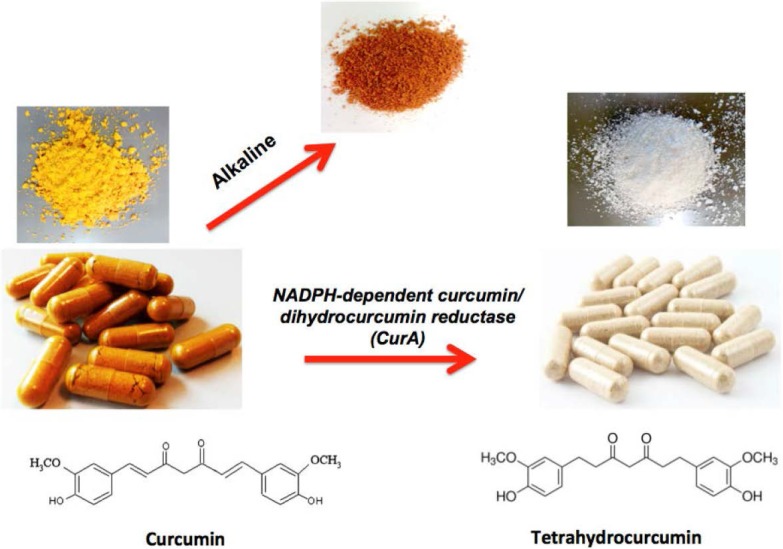
Curcumin metabolically converts to tetrahydrocurcumin via the NADPH-dependent curcumin/dihydrocurcumin reductase (CurA) enzyme. As pH increases (more alkalinity), curcumin becomes more red. But tetrahydrocurcumin is white![25]
While this data on absorbability would already be enough to consider supplementation with tetrahydrocurcumin -- things don't stop there. Curcumin is regarded as one of the most powerful natural antioxidants available to us, setting a rather high bar that's difficult to clear. But, just as a more bioavailable compound was hidden before our very eyes, a more effective antioxidant might have been as well!
In 2015, a team of researchers set out to analyze how significant, if at all, the differences between curcumin and 4-HC were in regards to their respective biological effects. In this meta-review, these scientists compiled and dissected more than 50 studies in an effort to formulate a complete comparison of the two antioxidants.[25] What they found ultimately sheds light on how the body uses the two substances. Spoiler alert - each one has their own set of strengths and weaknesses!
Tetrahydrocurcumin vs. curcumin
Various studies comparing these two differ in conclusion, with some supporting curcumin and many others supporting tetrahydrocurcumin. When looking at either one of them, most people tend to focus on the antioxidant and anti-inflammatory activity of the two ingredients. Luckily, these are the properties central to much of the existing research.
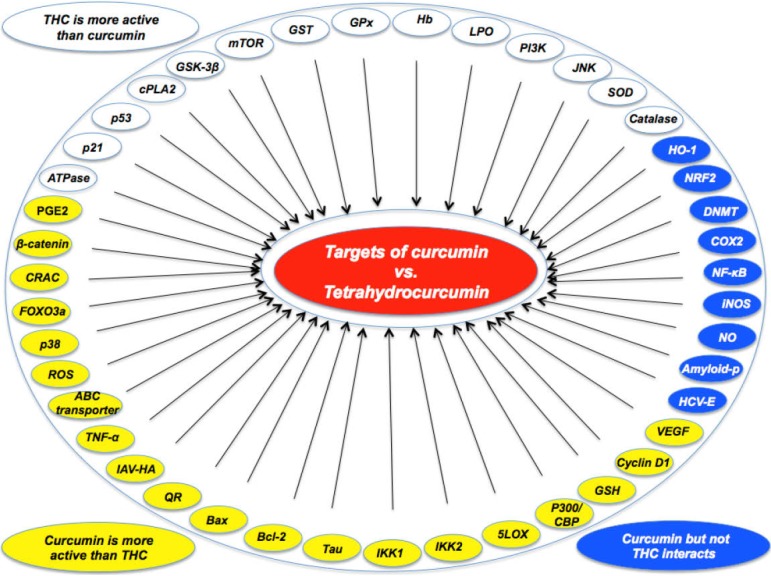
Targets of Curcumin vs. Tetrahydrocurcumin: Curcumin is more effective in modulating some, but tetrahydrocurcumin is more effective in others. Not all molecules are targeted by both.[25]
While both ingredients are active antioxidants, they differ in how they scavenge free radicals in the body, which ultimately dictates how effective each ingredient is against a specific application.
Tetrahydrocurcumin: more water soluble and better with nitrogen, hydrogen, and LDL protection
One study from this review discovered that since tetrahydrocurcumin is more water-soluble than curcumin, it was more effective in subduing N2O-triggered HO-induced lipid peroxidation.[26] Another study found 4-HC to be more potent against copper-induced oxidation of human low-density lipoprotein (LDL) as well.[27] This is critically important, since the oxidation of LDL cholesterol is what's "harmful" with regards to LDL[28,29] (along with high triglycerides and low HDL) -- not the mere existence of LDL itself.[30-33]
Another study from 2007 saw higher levels of scavenging from 4-HC against the DDPH radical, noting that the hydrogenation of tetrahydrocurcumin ultimately enhances its antioxidant activity.[34] While there are certainly studies that saw curcumin outperform 4-HC in other tests against oxidizing agents,[26] there's substantial evidence suggesting that 4-HC is the superior overall antioxidant between the two of them!
But, curcumin does edge out its metabolite elsewhere...
Similar to the comparisons made in their antioxidant activity, research cited in this 2015 review cites various studies concerned with inflammation. The tale here is similar, yet opposite, as it theorizes that curcumin seems to be a better anti-inflammatory. Research suggests that curcumin is more effective than 4-HC in reducing inflammation to a higher degree in various cases - suppressing carrageenan-induced inflammation,[36] lipid build-up in macrophages,[37] and tumor necrosis factor (TNF)-⍺-induced NF-κB activation are a few applications that research supports.[19]
The important distinction made in this 2015 review comparing curcumin and 4-HC is that though they both share similar properties, each is best-suited for certain uses - curcumin may be a superior anti-inflammatory agent, but in terms of scavenging free radicals, its tetrahydrocurcumin that takes the crown!
With this in mind, let's transition away from the parent compound, and fully dive into what 4-HC is capable of!
Main benefits of Tetrahydrocurcumin
In addition to being a strong antioxidant, tetrahydrocurcumin brings a lot more to the table. Its abilities stem much further than that, touching areas such as blood sugar and circulation.
-
Nootropic potential as an acetylcholine protector
Acetylcholine is known as the "learning neurotransmitter", as it's involved in cell-to-cell communication and is found in high amounts at neuromuscular junctions.[38] This transmitter is involved in the central nervous system (CNS), where it helps improve memory, learning, attention, and alertness.[39,40]
There is a great deal of research dedicated to increasing and maintaining acetylcholine levels. Several nootropic choline-based supplements exist for the former, but the scientific community has been on the lookout for the latter, since the neurotransmitter is deactivated by an enzyme known as acetylcholinesterase (AChE).
Tetrahydrocurcumin can fill the role of maintaining healthy acetylcholine levels, helping to prevent degradation and the issues associated with low levels, such as memory loss. Research has shown that 4-HC inhibits AChE about two times better than curcumin![25,41]
This likely explains why testers have claimed to enjoy the "feel" of tetrahydrocurcumin more so than curcumin, especially when taken before exercise or study, since acetylcholine stores decline over time.
-
A more powerful antioxidant, but still an anti-inflammatory!
Inflammation can arise in a multitude of ways, in almost any area of the body. Generally characterized as something to avoid, sometimes, small amounts of it can be beneficial -- lifting weights, for example, causes inflammation that ultimately helps us grow stronger.
This exception to the rule displays the true relationship between our bodies and inflammation - inflammation is the body's way of telling you that it's uncomfortable. In the case of exercise, this discomfort can lead to gains somewhere down the line, assuming proper building blocks like protein are provided for repair. But when inflammation builds in excess within key areas such as the immune system or joints, it can yield serious issues. As such, providing the body nutrients to help fight this undesirable inflammation is an important concern.
Mainly through its exceptional antioxidant profile, 4-HC operates as a potent anti-inflammatory within the body. It goes toe-to-toe with curcumin, one of the most discussed inflammatory-fighting compounds around, and though it may not come out on top in the end, 4-HC does sneak in its fair share of punches before the final bell rings!
Efficiency: similar results at nearly half the dosage
In 1982, a team of researchers compared the anti-inflammatory effects of curcumin and several of its metabolites, tetrahydrocurcumin included. These compounds were tested with lab mice, as carrageenan-induced rat paw edema and cotton pellet granuloma models were constructed. They found that, at 30mg/kg, 4-HC reduced inflammation by 56.6%.[36] Furthermore, while similar results were seen using curcumin, 4-HC brought about equal results -- at half the dosage. With similar effects at a smaller dosage, this study unveiled 4-HC as an incredibly efficient anti-inflammatory substance.
The mechanism: attenuating pro-inflammatory indicators (interleukins and more)
Taking these results a step further, research from 2018 discovered just how this efficiency was achieved. As opposed to testing 4-HC against other ingredients in a carrageenan-induced rat paw edema model, this study was actually more concerned with the variance indifferent doses of 4-HC. Their initial findings support the previous research cited - they found that at 10mg/kg, 20mg/kg, and 40mg/kg, tetrahydrocurcumin significantly inhibited inflammation in a dose-dependent manner compared to a control. More importantly, however, was that they also identified how.[42]
These scientists saw that 4-HC attenuated pro-inflammatory indicators like interleukin-1, interleukin-6, TNF-⍺, and prostaglandinE2.[42] These mediators are commonly linked to acute inflammation,[43], chronic inflammation,[44] and even tumor proliferation.[45] Being able to keep them at bay is incredibly important, which makes something like 4-HC invaluable!
Lower dosage = more powerful formulations and better compliance
In the grand scheme of things, both curcumin and 4-HC are excellent options when looking to keep inflammation down and the body happy, despite the former being a bit more versatile than the latter. However, when it comes to choosing one of the two as part of a larger formula, efficiency matters -- using 4-HC, which can be just as powerful at smaller doses and can save room for the inclusion of other ingredients within the product! As we've seen with joint supplement ingredients like glucosamine, chondroitin, and MSM, whose combined clinical dosages require about six capsules per day, long-term compliance can be one of the biggest difficulties in success.
-
Blood glucose regulation
Perhaps the most attractive benefit of tetrahydrocurcumin is its blood sugar and insulin support. Keeping blood sugar in check and optimizing insulin sensitivity and secretion practically go hand-in-hand, and are both incredibly central to health-related goals.
When we consume and digest food, the body releases its energy into the bloodstream, where it can then be transported for either use or storage. The body secretes insulin in order to facilitate this shuttling of nutrients, and we're almost exclusively dependent on it to do so. However, things don't always go according to plan - poor blood sugar management is an issue that affects countless individuals, either due to their diet, genetics, or other outside circumstances. Insulin resistance and chronic blood sugar elevation can lead to things such as weight gain or diabetes, creating a serious roadblock in any health-related goals.
Sure, one can do their best to avoid this through maintaining a healthy diet (ie one lower in processed foods) and exercise routine, but sometimes, a little extra help can go a long way. Thankfully, tetrahydrocurcumin is one effective way of introducing some aid.
In a study from 2006, researchers tested the effects of 4-HC, at a 80mg/kg of bodyweight daily for 45 days, in diabetic rats. The original hypothesis was that the natural supplement would help attenuate the symptoms of diabetes within these lab rats, and as such, metrics regarding their blood glucose and plasma insulin levels were of specific interest to the researchers.
Beats curcumin in animal models
At the conclusion of the 45-day experimental period, they were proved right - rats given oral tetrahydrocurcumin had reduced their blood sugar levels by 18.2% and had increased plasma insulin by 12.5% - compared to the curcumin group![47] Realize that these percentages weren't yielded in comparison to their baseline readings, they were calculated via cross-analysis with rats given curcumin! That's right - 4-HC lowered blood sugar almost 20% more than its parent compound, and beat it out in enhancing insulin secretion, as well.[47]
This research was actually performed in response to two earlier studies that revolved around the relationship yielding the benefits cited above. In 2001, a team of scientists saw that in diabetic mice, decreases in pancreatic β-cells were proportional to diabetes-related metabolic dysfunction,[48]. This translates to a proportional relationship between pancreatic β-cells and insulin secretion. The pancreas is the organ responsible for insulin secretion, effectively tying these cells to healthy blood glucose maintenance.
Another team took things a step further, asking an excellent question - "with that relationship in mind, what can increase the effectiveness of pancreatic β-cells?" They found their answer in 4-HC, seeing that tetrahydrocurcumin helped stimulate pancreatic β-cells, essentially helping kick off the process of insulin synthesis and release.[35]
Is tetrahydrocurcmin responsible for curcumin's success in lowering bloog sugar? Likely so
The relationship between curcumin and blood glucose is well-known,[49] and is often cited as the primary reason many users incorporate the ingredient into their daily lives. However, the benefits brought about by curcumin can possibly be enhanced by using tetrahydrocurcumin instead. Research suggests that it may be the driving force behind the curcumin-insulin tandem, and when used in isolation at an equivalent dose, it could be more effective, too!
-
Healthy cholesterol levels
As with most biochemical chains within the body, there's seemingly always a "trickle-down" effect that exists whenever one interaction is carried out. For example, ingesting caffeine doesn't do just one thing, but rather influences multiple mechanisms through their inherent relationships with one another.
This rings true for blood glucose levels as well, with one major link being its correlation to lipid accumulation,[50] most commonly known as high cholesterol. The buildup of lipids can threaten heart health, and is associated with various cardiovascular issues, especially when there is also inflammation and oxidation. Given the blood glucose / lipid relationship, wouldn't it make sense that something that reduced blood sugar could also reduce lipid levels as well?
Scientists rightfully asked this question in studies involving tetrahydrocurcumin supplementation, seemingly proving their original hypothesis correct! Following their conclusions from their 2006 study that used a diabetic rat model to compare the effects of 4-HC and curcumin, the same team of researchers shifted their focus from blood glucose to lipid concentration.
In 2007, they essentially reconstructed the same model, but instead collected metrics regarding various cholesterols, triglycerides, and phospholipids. They found that tetrahydrocurcumin significantly reduced cholesterol, triglycerides, free-form fatty acids, phospholipids, and low-density lipoprotein (LDL) cholesterol in both serum and liver samples.[46] They also saw a slight increase in high-density lipoprotein (HDL) cholesterol, colloquially referred to as "good" cholesterol, following treatment.[46]
Beats curcumin in its effects on lipids
Just as was the case in the blood glucose-focused study, these effects were also found to be more significant in the 4-HC group when compared to the curcumin group.[46]
The findings from this study not only suggests that 4-HC is capable of lowering lipid accumulation, but also optimizing cholesterol balance. In decreasing LDL cholesterol while increasing HDL cholesterol, it shifts towards equilibrium, effectively tilting the scales towards the "good" cholesterol and better triglyceride ratios. Maintaining healthy cholesterol levels promotes heart health and proper metabolic functioning, both of which are central to anyone looking to stay healthy.
Tetrahydrocurcumin helps prevent deadly lipid peroxidation - but combine it with regular curcumin and it does even better![26]
While the blood sugar relationship gets most of the shine in 4-HC (as well curcumin) treatment, the ancillary effects that stem from it are as equally as impressive. 4-HC's ability to keep blood lipid levels in check may be a secondary act of sorts to the main show that is blood glucose regulation, but considering how potent the sequel seems to be, it should not be overlooked!
-
Maintains vasorelaxation amidst outside factors...
Metabolic dysfunction has a wide-reaching impact on the body, affecting countless mechanisms including, but not limited to, blood glucose and cholesterol levels. In models focused on these deficiencies, scientists have also identified poor vascular circulation as an ancillary effect, noting that a decrease in nitric oxide significantly limits the ability to move oxygenated blood throughout the body.[51]
More specifically, these effects are well-understood in endothelium tissues, the layer of cells that line various organs and coronary vessels. Maintaining vasorelaxation of these tissues is central to efficient blood flow, but this vasodilation isn't necessarily a given, with various circumstances and substances (such as high blood sugar) negatively impacting these tissues. Fortunately, tetrahydrocurcumin may be utilized in an effort to minimize the impact of these adverse entities, providing a vasoprotective effect!
In a study from 2012, researchers investigated the effects of 4-HC in rat aortic rings. Carbachol was used to vasodilate the rings, while homocysteine thiolactone (HTL) was then introduced to inhibit such vasorelaxation. They found that both 10μM and 30μM of 4-HC significantly restored the vasorelaxation originally induced by carbachol.[52] They also found that the restriction caused by HTL was due to both reduced bioavailable nitric oxide and increased free radical presence, the latter of which helps explain the significance 4-HC holds in this mechanism.
By contributing to a vasodilated state, 4-HC helps keep oxygen flowing throughout the body. You've likely heard of vasodilation before, especially when discussing "the pump" many chase during training, but efficient movement of oxygenated blood is much more primal than training enhancement - it's literally vital! While 4-HC may not be a potent pump-inducer, it surely helps keep blood moving as it should, an effect noteworthy for those who have the metabolic issues we've already discussed!
-
...which can lead to healthy blood pressure!
Given its importance in moving oxygenated blood, it shouldn't come as a surprise that efficient endothelial and vascular function is also crucial for normal blood pressure levels. Hypertension, or high blood pressure, is a common symptom of metabolic irregularities that's traced to significant alterations in endothelial tissue. Vasoconstriction and elevated levels of free radicals often push the issue, making it harder for the body to move blood, effectively increasing blood pressure.
In 2011, scientists conducted a placebo-controlled experiment using mice to see whether or not tetrahydrocurcumin could attenuate increases in blood pressure. Using L-arginine methyl ester (L-NAME) to induce vascular dysfunction, the mice were split into three groups - one received just L-NAME, another received L-NAME with 50mg/kg of bodyweight of 4-HC, and the third received L-NAME with 100mg/kg of bodyweight of 4-HC.
Treatments were administered daily for three weeks, after which the results would be assessed. They found that both tetrahydrocurcumin groups displayed a significant decrease in blood pressure when compared to the L-NAME-only group.[53] Notably, this effect was seen as dose-dependent, with the 100mg/kg group seeing a greater reduction than the 50mg/kg group.[53]
In relaxing endothelial linings and allowing for regular vascular activity, 4-HC helps lower blood pressure in those who struggle to keep blood pressure at bay. Yet another awesome cardiovascular benefit here!
-
Liver support
Finally, there also seem to be some direct benefits with another critical organ - the liver!
Hepatic fibrogenesis is the process by which the liver repairs cellular injuries. It's a completely normal, healthy process, but the body doesn't always conduct it as it should.
Similar to how excessive immune response ultimately becomes a bad thing, so too does hepatic fibrogenesis - continuous fibrogenesis, resulting from chronic liver injury, leads to cirrhosis and liver failure.[54] Thus, introducing other means to aid liver health and carry more of the hepatoprotective load (alleviating fibrogenesis in the process) can go a long way in sustained liver health.
In 2017, a team of scientists investigated the effects of 4-HC and curcumin in hepatic fibrogenesis models in vitro. They found that tetrahydrocurcumin significantly reduced hepatic injury and fibrogenesis to a higher degree than curcumin.[28]
Additionally, they seemed to identify how 4-HC accomplished this - through protection of hepatocytes from apoptosis, blocking of fibrogenic signaling, and suppressed hepatic stellate cell stimulation. The study concluded in suggesting that dosages of tetrahydrocurcumin at less than 50mg/kg of bodyweight could be used as a hepatoprotective agent in instances where fibrotic liver disease is an issue.
Safety and dosing
Unfortunately, isolated 4-HC is a relatively novel ingredient, lacking sufficient human research to pinpoint toxicity risks and optimal dosages. However, there's enough research using mice that we can make responsible extrapolations.
Suggestion: 200mg twice per day
Dosage ranges in the studies above varied quite a bit. Solid anti-inflammatory effects are seen at doses as low as 20mg/kg body weight in animal research, while a dosage of around 80mg/kg of bodyweight yielded the blood glucose-regulating, lipid-lowering, radical-scavenging effects we've touched on. For reference, this range nets us roughly 200-800mg/day dosing for a 150-200lb individual, but this depends on the weight of the animals in the studies, which weren't disclosed.
All in all, we believe that a 200mg dose taken twice per day will yield the best results in terms of benefits and cost-effectiveness. 4-HC can be taken on an empty stomach, and is best used prior to a meal if looking to achieve blood sugar lowering effects. This is also in line with other curcumin supplements, which often require twice the above dose for best results.
No toxicity seen at higher doses
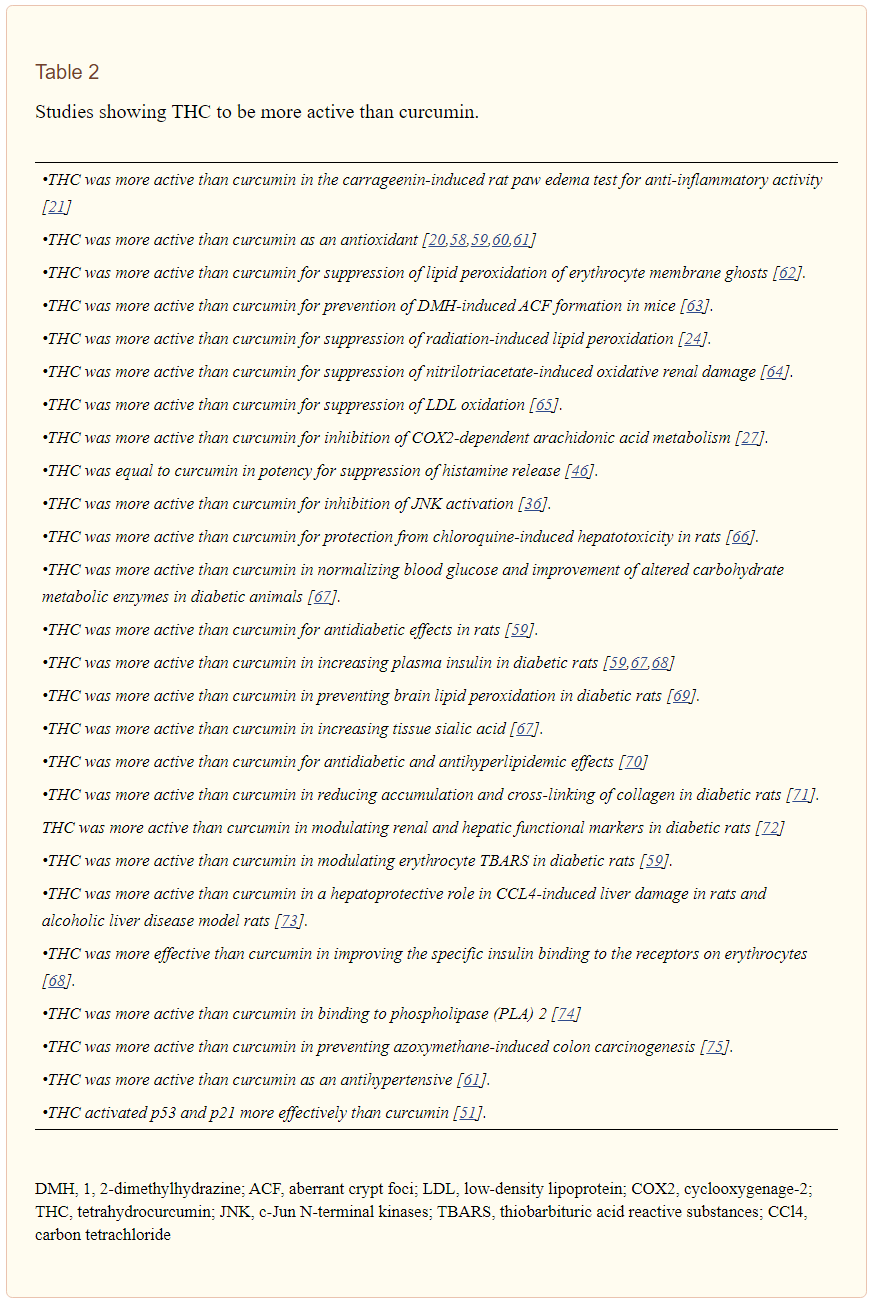
An impressive list of studies where tetrahydrocurcumin has been shown to be more active than curcumin![25]
Additionally, dosages as high as 400mg/kg of bodyweight have been used without seeing adverse effects.[25]
While we anxiously await more human-specific research centered around this metabolite, we're rather confident in its safety profile. Extracting human dosages from mice models is never ideal, but the biomechanics and lack of toxicity seem transferable in this case.
Curcumin is a safe compound in and of itself, having been used for centuries to yield health benefits. This also means that 4-HC has been used for just as long, considering it's a part of curcumin. With the reputation put forth by existing research and some strong longevity, it's difficult to not be confident here!
As with anything, though, there's a point where too much becomes detrimental. As long as you're responsible and follow the rough outline of use provided by existing research, 4-HC can likely be of benefit to you!
Interested in Tetrahydrocurcumin? Try out CurcuPrime from NNB!
Being a somewhat novel ingredient, you're probably wondering where you can find tetrahydrocurcumin. Look no further than NNB Nutrition to deliver!
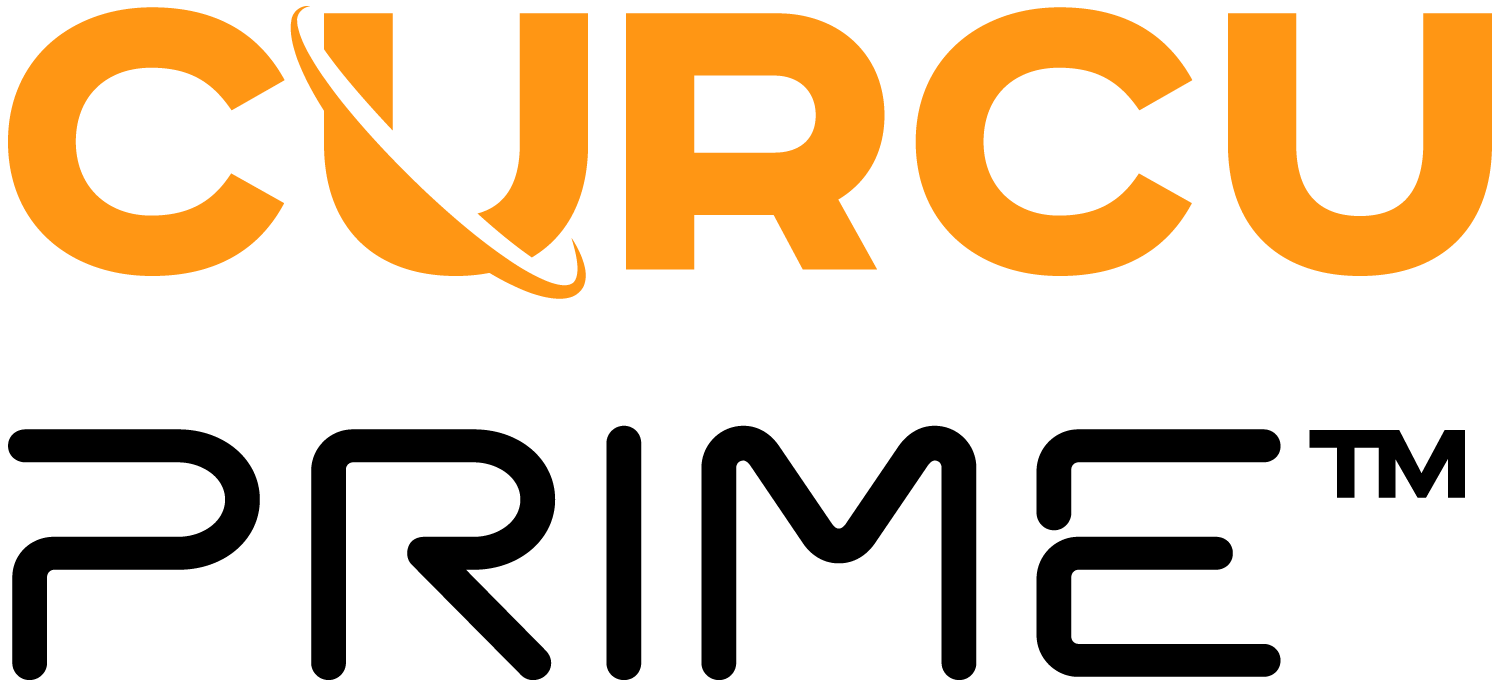
NNB Nutrition's CurcuPrime is a purified tetrahydrocurcumin ingredient for the precision-targeted benefits discussed above - and it's non-staining!
NNB Nutrition has become a mainstay in the cutting-edge sphere of sports supplementation, continuously pushing the boundaries of existing ingredients to make them, and the formulas that utilize them, exponentially better. We've seen them dial up numerous ingredients we thought we knew the capabilities of, such as grains of paradise and berberine. It seems they're back again, yet this time, they shifted their focus towards the powerhouse metabolite behind curcumin.
CurcuPrime is the latest ingredient from NNB, another listing in what is becoming a transcendent line of formulated ingredients. CurcuPrime boasts everything you've come to expect out of a NNB formulation - 100% purity, completely free of adulteration, science-backed, and colorless.

NNB Nutrition is an innovative ingredient development company with an elite team of over 100 scientists from over 10 countries.
Derived and verified through top-notch scientific techniques like high performance liquid chromatography (HPLC) and high performance thin-layer chromatography (HPTLC), CurcuPrime is taking a stab at claiming the title as "the best 4-HC supplement available." If its siblings in NNB Nutrition's lineup are any indication -- it may just have a case.
Looking for an all-natural way to improve blood glucose levels, inflammation, or cardiovascular health? Consider adding some 4-HC to your regimen via CurcuPrime, yet another high-quality ingredient formulated by NNB Nutrition! For more info and lab tests, you can reach NNB at NNBNutrition.com.
Our Tetrahydrocurcumin / CurcuPrime Review
Mike discusses his "feel-good" experience with this heavily underrated ingredient:
Conclusion: Tetrahydrocurcumin takes curcumin up a notch!
Turmeric has been around for ages, with herbal-based medicinal practices first introducing the compound into the world of health centuries ago. With various anecdotal uses and purported benefits, it naturally peaked the interest of scientists as analytical tools enabled them to investigate what was going on within this powerful herb.

Meet Tetrahydrocurcumin: A precision-targeted, more bioavailable curcumin metabolite that is more white than yellow! You can get it from NNBNutrition.com
Curcumin, the main bioactive constituent within turmeric, was initially given much of the credit, and rightfully so - many of the benefits tied to turmeric were seen in clinical studies using curcumin, which itself proved to be a powerful antioxidant and anti-inflammatory, among other things. However, science is never satisfied with an initial finding, continuously looking to push things forward. Thus, it was only a matter of time before somebody asked if there was anything powering curcumin!
Tetrahydryocurcumin, a natural metabolite of curcumin, proved to be that behind-the-scenes initiator. A byproduct of curcumin yielded during digestion, this compound has superior bioavailability compared to its parent ingredient, which in turn gives it enhanced benefit. In research, 4-HC has shown to be a more potent antioxidant, stronger blood glucose regulator, and blood lipid-optimizing agent than curcumin, while also bringing about excellent vascular benefits, as well!
While curcumin might be a tad better when it comes to fighting inflammation, 4-HC surpasses it in almost every other potential benefit, while also possessing anti-inflammatory properties of its own. Better bioavailability and equal, if not superior, effects in its uses? In the search of finding ingredients that help keep blood sugar, cholesterol, and heart health in control, you'd be hard-pressed to find something as good as 4-HC!
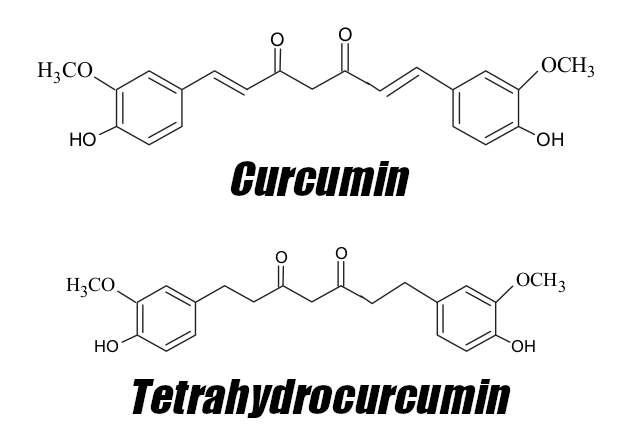

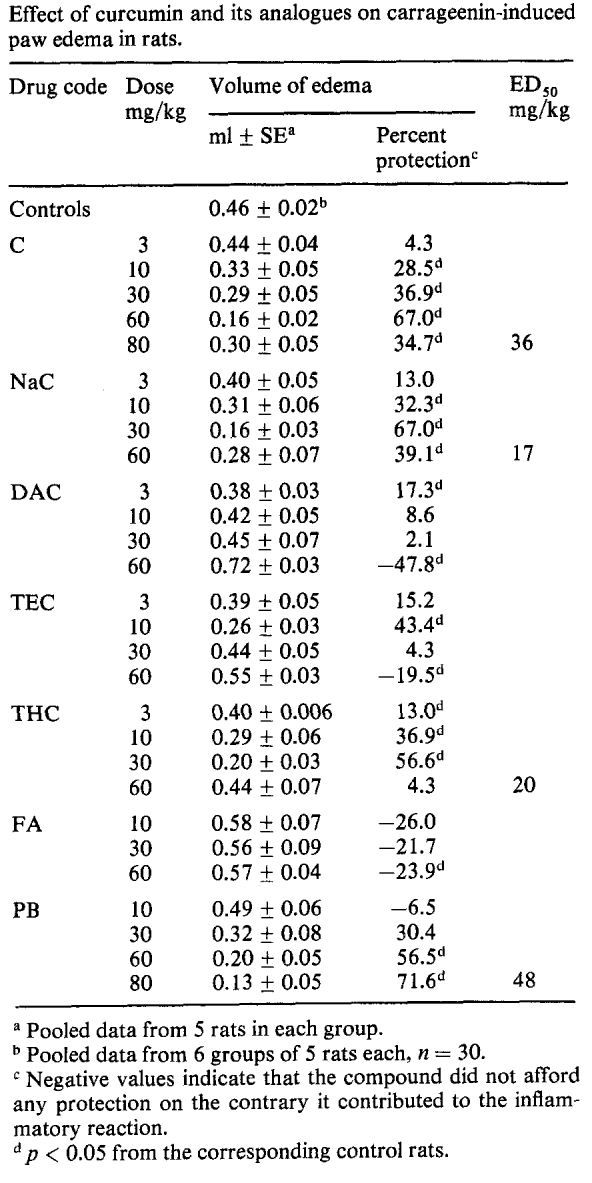
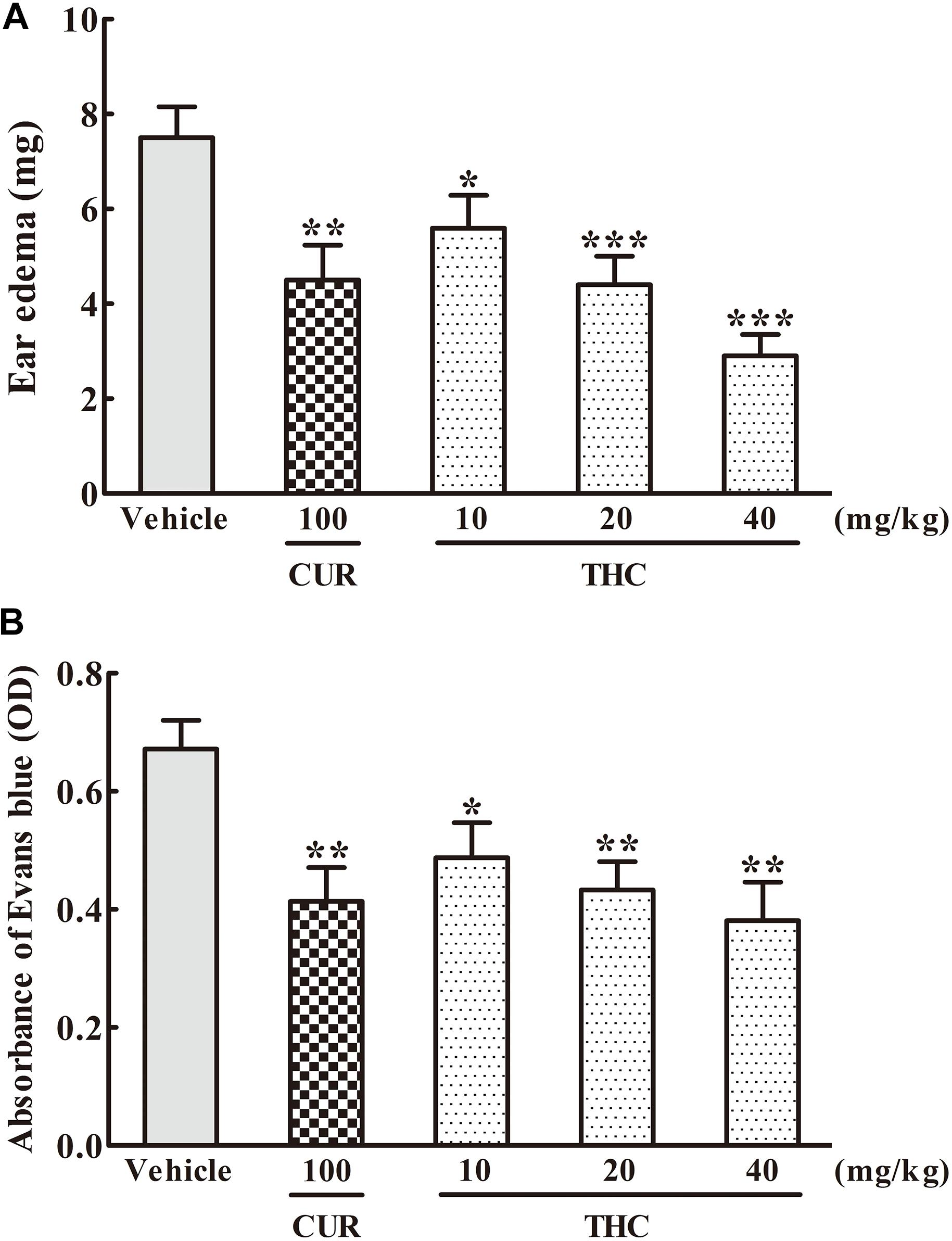
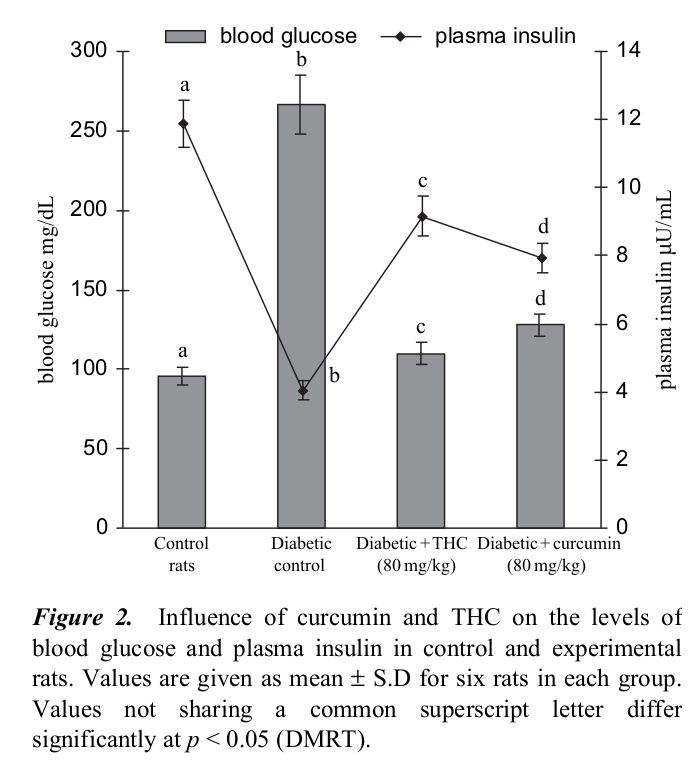
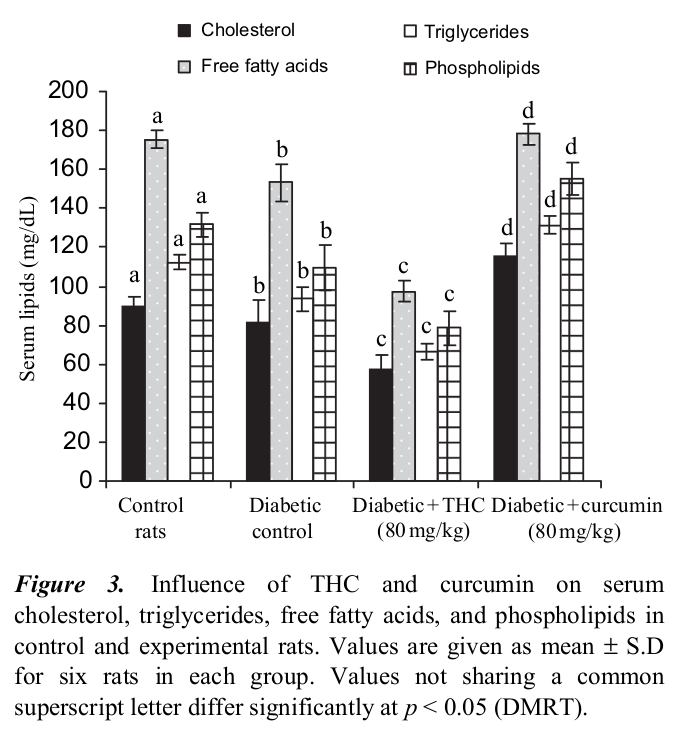
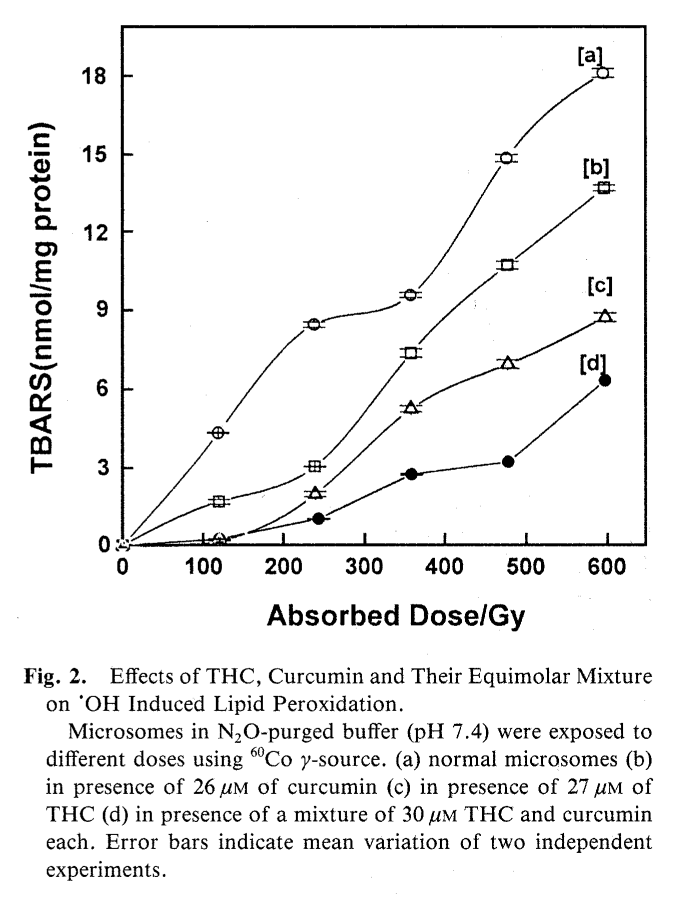
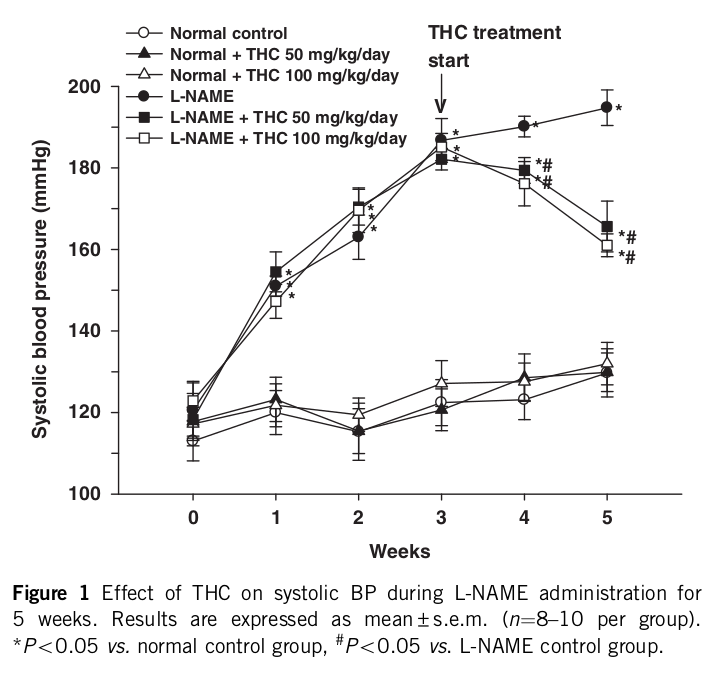
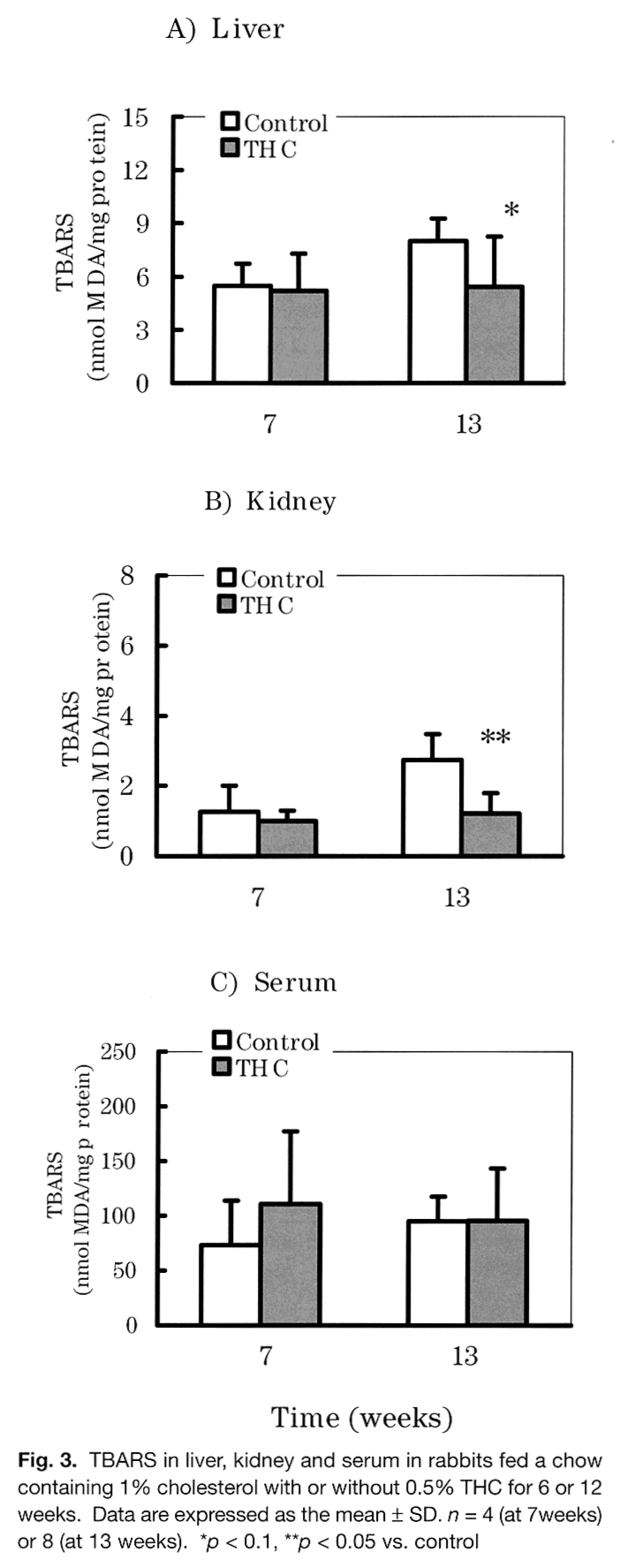


Comments and Discussion (Powered by the PricePlow Forum)